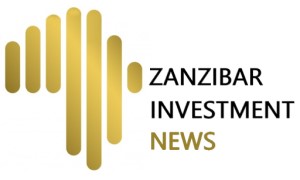Solar street lighting is gaining traction globally as the world looks for eco-friendly and sustainable energy sources. They harness solar power during the day, store it in batteries and use it at night, thus, eliminating the need for grid electricity.
Pundits for solar street lighting praise them for: cost savings, independence and reliability, easy installation and flexibility, environmental friendliness; and versatility and smart features.
Here in Tanzania, we are witnessing street after street being installed with solar street lighting to the delight of many citizens and street users. This was the case some two or three weeks ago when a stretch on about one kilometre of the road towards Mbweni Village in Dar es Salaam was adorned with street lights in a project that was implemented at supersonic speed. The day the lights were switched on, sections of the street that were dark and frightening suddenly came to life.
This happiness however, soon turned into doubt, since on day 2 of the switch on, at least one of the street lights went dead. As I write as on now, at least 15 of these newly installed lights have gone dark. If this situation persists, we are likely to see darkness reclaiming its space, this time, joined by ghost, dark street light poles.
This situation can be seen in a stretch from Mwenge to Morocco, where, solar street lights installed some 5 years ago have gone dead and large sections of the street stand in darkness at night. In the Mlongawima area, the story repeats itself. At least 17 of the street lights are just standing there forlorn, emitting no light.
Are street lights supposed to live that short? According to some sources consulted, on average, a well-designed and properly maintained solar street light can have a lifespan of 10-20 years; although some parts, like batteries may need replacing in a shorter time span. Clearly, what we are buying for our streets as well as our homes, and which packs up within a short period is not the best quality. How are we to know?
Shops selling solar power equipment, which have sprung up everywhere, just have a simple language, about the wattage (which, is in most cases exaggerated), number of bulbs, price (you are told that you get a discount), and a suspicious six months or one year guarantee. Nothing technical.
There are some basics that one needs to know about street lights and what salespersons do not tell you.
One, is the source of the light, noting that solar-powered lamp sources come up with several options: energy-saving lamps; LED lamps; induction lamps and sodium lamps. LED lamps are taunted as the better choice.
Two is the type of storage battery, since all solar lights are powered by batteries, of which there are two types: Lithium and Lead-acid. Of the two, lithium batteries are better, having a longer lifespan, and stronger resistance to temperature.
Other factors to consider include temperature and latitude, heat dissipation performance, illumination levels; temperature of the black lamp housing; the controller; the sensors; the solar controller; and the solar panel.
When it comes to their structure solar street lights can be divided into two types: integrated and semi-integrated. The integrated ones are compact and easy to mount. They are ideal for lighting smaller roads, sidewalks, gardens, residential areas and other locations where simplicity and ease of installation are key factors to consider.
In the semi-integrated type, the solar panels are separate from the lighting fixtures. These are suitable for larger roads, parking lots, squares and areas which demand higher lighting.
From a layman’s observance, semi-integrated types are the better choice. Chances, they capture more of the sun energy, and, with a more powerful battery, they can provide better illumination which can last the whole night without becoming dim or switching itself off. Permanent glare, which does not change by sensing movement or heat may be a better choice.
The height of the solar street lights may be an issue of consideration. In residential streets and pathways, a height of 4.5 meters is recommended, while in larger streets, 6 meters is recommended.
At this stage, when solar lighting is new in our economy, experts and public regulatory authorities must come to the rescue of the public, to educate them to make the right choice. It is unfair to leave them (us) to the whims of traders who are there to fill their pockets as fast as possible, from selling substandard goods.
Contractors may install substandard street lights, relying on sellers, without having official guidelines. This will almost mean public money going down the drain; and a disappointed society.
As for us, the public, we need to educate ourselves on what a good solar system is composed of, so that we make informed choices; otherwise we stand to lose a lot of money, or losing out on the good qualities of solar lighting.














